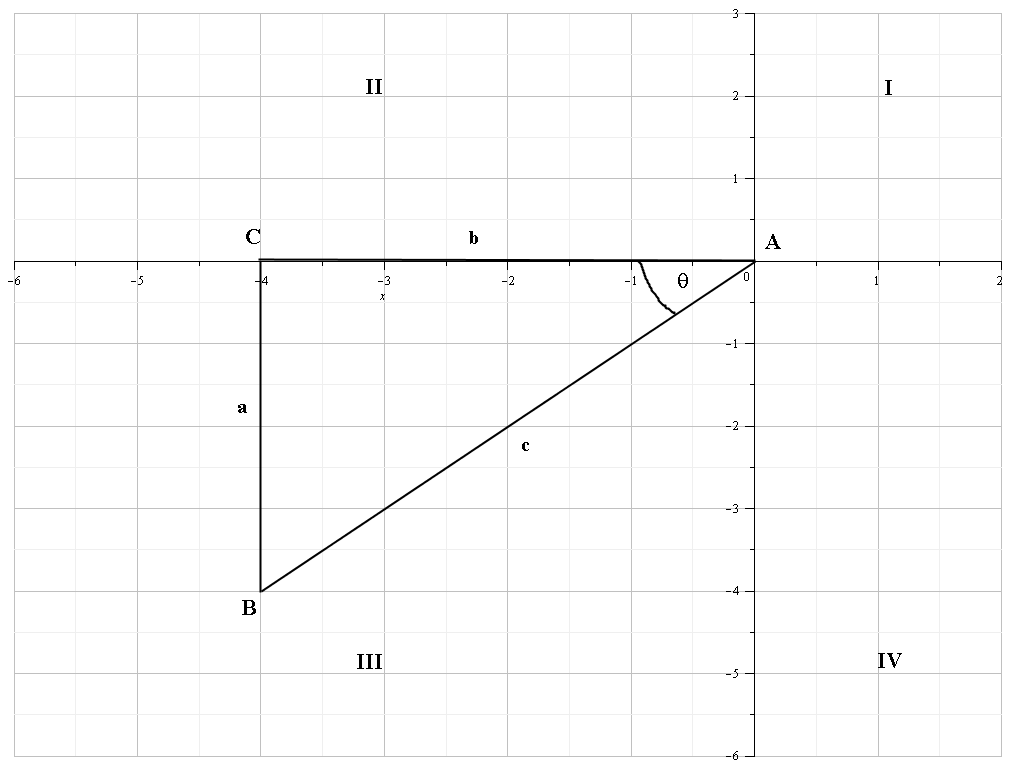
If we are given coordinates of the form #(x,y)#, where #x# and #y# are negative then we are in the III quadrant.
Since #(-4,-4)# are the sides of a right triangle, then the length of the terminal side ( the hypotenuse ) is given by Pythagoras' theorem:
Let the terminal side be #bbr#
#r^2=(-4)^2+(-4)^2#
#=>r=sqrt((-4)^2+(-4)^2)=4sqrt(2)#
So for the right triangle #bb(ABC)#, we have:
#c=4sqrt(2)#
#a=-4#
#b=-4#
#sin(theta)="opposite"/"hypotenuse"=a/c=-4/(4sqrt(2))=color(blue)(-sqrt(2)/2)#
#cos(theta)="adjacent"/"hypotenuse"=b/c=-4/(4sqrt(2))=color(blue)(-sqrt(2)/2)#
#tan(theta)="opposite"/"adjacent"=a/b=(-4)/-4=color(blue)(1)#
Since:
#color(red)bb(csc(theta)=1/sin(theta))#
#color(red)bb(sec(theta)=1/cos(theta))#
#color(red)bb(cot(theta)=1/tan(theta))#
We have:
#csc(theta)=1/(-sqrt(2)/2)=color(blue)(-sqrt(2))#
#sec(theta)=1/(-sqrt(2)/2)=color(blue)(-sqrt(2))#
#cot(theta)=1/1=color(blue)(1)#

